Strategies for Building a Resilient Supply Chain
Here we look at strategies for leveraging technology and digitizing supply chain operations to enhance resilience to help your or build a resilient supply chain.
Here we look at strategies for leveraging technology and digitizing supply chain operations to enhance resilience to help your or build a resilient supply chain.
Table of Content
Challenges like materials shortages, volatile economic conditions, and rising customer demand, have made it harder than ever for supply chain orgs to anticipate and meet demand.
And — natural disasters, geopolitical turmoil, and other unexpected disruptions have only underscored the fragility of supply chains.
Then there’s the fact that any disruption in one part of the supply chain can have a cascading effect, leading to delays, shortages, and increased costs. Therefore, having a resilient supply chain ensures that businesses can quickly adapt and recover from disruptions, minimizing the impact on operations.
Building a resilient supply chain is crucial for companies to navigate future uncertainty successfully. Below, we look at some strategies for leveraging technology and digitizing supply chain operations to enhance resilience.
Boosting supply chain resilience begins with strategic investments in composable, cloud-based technologies.
According to Microsoft, composable platforms follow three key principles, all of which work together to help orgs overcome supply chain challenges and prepare for future disruptions:
Keep in mind the benefits of a composable platform – real-time insights, dynamic collaboration, and anywhere access to critical information – hinge on being in the cloud.
Data is the backbone of any business strategy and supply chains are no exception. While you can use your data to support an endless amount of SCM goals, there are some tried-and-true data strategies for building stronger supply chains.
Here are some of our current favorites:
Establish Greater Inventory Visibility. According to Microsoft, far too many organizations have inventory blind spots that put them at risk. Experts advise supply chain orgs to first make sure that their SCM stack can enable real-time inventory visibility across the entire network.
Without integrated, real-time inventory visibility, leaders often miss all the “little” things like delays, bottlenecks, and leaks that might occur between procurement and the final sale.
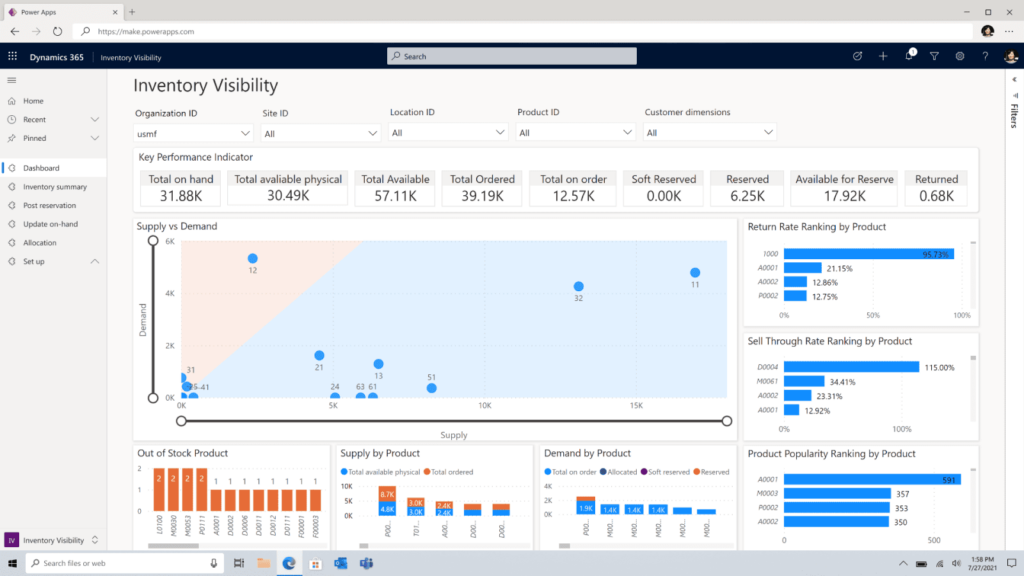
But visibility is just a starting point. You’ll also need to make sure your SCM stack can leverage inventory insights to achieve a specific result.
Install Predictive Analytics Everywhere. Predictive analytics can provide valuable insights into supplier performance, allowing businesses to make informed decisions about sourcing and supplier relationships. This can lead to better negotiation terms, improved quality control, and ultimately, stronger partnerships.
If you’re looking to optimize fulfillment, improve customer satisfaction, and evolve alongside market conditions, the D365 Intelligent Order Management add-on uses AI to serve up real-time inventory, order, delivery, and customer insights.
Take Advantage of “Smart Factory” Technologies. Smart factories use AI and automation to capture additional supply chain insights from physical assets and use that data to optimize processes.
Let’s say your goal is improving manufacturing processes, then outfitting your production line with IoT sensors will enable remote monitoring and capture critical information about process efficiency and asset performance.
You might also incorporate data from RFID tags, barcode scans, and IoT-enabled assets and processes into your core platform. This allows for accurate and real-time tracking, reducing errors, minimizing stockouts, and optimizing inventory levels. This, in turn, ensures smoother operations and mitigates supply chain disruptions.
Per the 2022 IoT Signals: Manufacturing Spotlight report, manufacturing decision-makers cited increased equipment effectiveness, increased labor efficiency, and decreased operating costs as the most important smart factory KPIs.
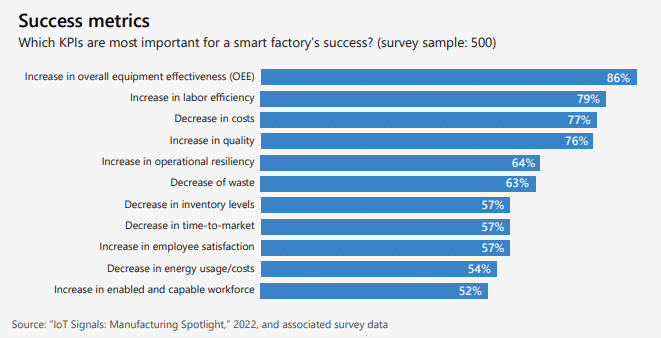
You can build a specialized solution with Azure IoT to automate operations, secure assets, and optimize processes. You can also use those insights with analytics tools like Azure Synapse and Power BI to track whatever KPIs matter most to you.
Embrace Digital Twins. Another way you can use data to level up your supply chain is by embracing a digital twin strategy. Digital twins are accurate, real-time simulations of assets, systems, or processes, and can be used to augment decision-making and improve planning.
In the ebook, Seven Principles of Supply Chain Management, Microsoft experts write that the more volatile the demand, the harder it is to source supply. Supply isn’t the sort of thing you can switch on or off. Instead, it’s more of a pipeline that moves raw materials and products between links.
This means, you’ll want to focus on establishing a balanced flow throughout supply chain as opposed to increasing capacity, which often results in unsold stock after spikes in demand come back down.
Place Smaller Orders More Often. One way you achieve greater balance is by placing smaller orders more often. That way, you’ll have a steady flow of supplies coming in, making it easier to accommodate changing conditions.
The idea is if you’re placing large, infrequent orders, any disruptions or delays will impact a larger share of your business. Now, this does mean you’ll probably need to negotiate new terms with suppliers and logistics providers, who tend to reward bulk orders with volume-based discounts.
Use Real-time Analytics to Measure Demand Volatility. You’ll also want to implement real-time analytics capabilities across the entire supply chain. This will allow you to classify and group different products based on their volatility. From there, you can set up automated alerts that give you a heads up when volatile products fall outside of tolerated minimums or maximum levels.
Embrace Demand-Driven Materials Planning (DDMRP). Something else that you should do here is move toward demand-driven planning, which aligns supply with actual customer demand. Microsoft just launched a preview of new DDMRP features in D365 SCM.
DDMRP replaces traditional approach to materials planning (MRP), which originated in the 1960s and has since become the basis of today’s industrial ERP systems. Demand-driven MRP draws on established requirements planning strategies like Lean Manufacturing and Six Sigma.
But – it brings in real-time supply chain data and predictive models to boost agility and resilience under current conditions. This can help you increase order fulfillment rates, compress lead times, lower total operating costs, and more.
D365 users with the Planning Optimization add-in can perform master planning calculations from their SCM workspace.
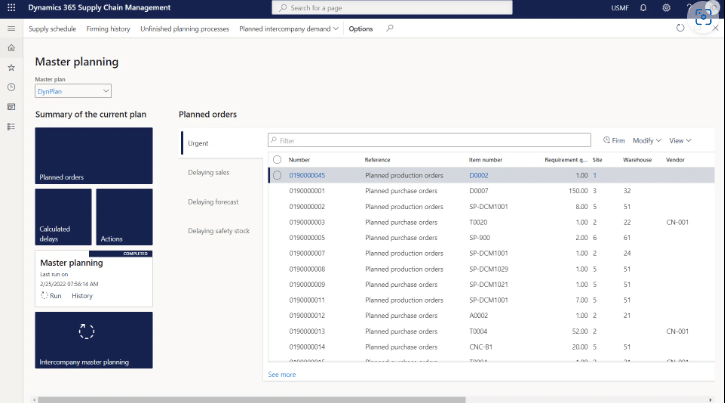
They can also implement planning priority models, which allows you to prioritize replenishment orders based on urgency, instead of the pre-defined requirements date, which is typical of traditional MRP solutions.
Prioritize Risk Management
By design, supply chains are supposed to be interconnected. While that’s generally seen as a net positive for SCM, the flip side of that is, supply chains are inherently lousy with risks.
If one “link” in the chain runs into trouble, it ripples across the network – often in unexpected (and expensive) ways.
Organizations that fail to protect themselves may face financial losses, shipping delays, materials shortages, litigation, or reputational damage. Pretty scary stuff.
Still, there are several things you can do to mitigate potential risks, including:
Continuously Monitoring & Measuring Supply Risk. Supply risk assessment covers evaluating supplier financial stability and geographical risks, and other factors that could have an impact on your ability to deliver on SCM goals.
In D365 Supply Chain Management, there’s a new risk assessment workspace that allows you discover potential risks to future orders based on custom criteria and patterns hidden in your data.
It uses AI to track risks by supplier, region, product group, or legal entity by analyzing key supply chain metrics, vendor performance histories, current conditions, and other variables.
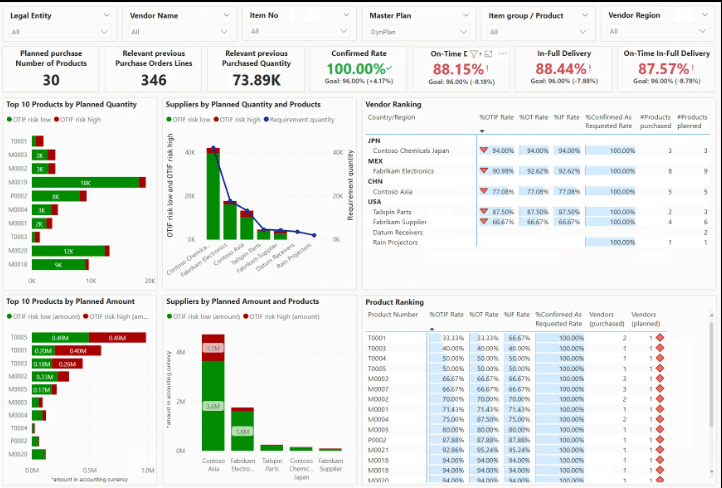
Users can compare supply flows for past purchases against planned supply, then filter by delivery method to ID alternate routes. Or – drill down to the individual products the algorithm flagged as “at-risk.”
These interactive reports reveal your biggest supply chain risks, allowing you to start building contingency plans that address the most vulnerable areas before disaster strikes.
Put Together a Comprehensive Scenario Planning Strategy. Reporting on risks alone won’t prepare you for action. Instead, you’ll need to come up with an end-to-end plan for handling the future scenarios you’re most likely to encounter.
Gartner put together this great little playbook that can help you quickly run through different scenarios and kickstart a more comprehensive game plan.
Here’s one of the worksheets used in the guide to ID and analyze the “driving forces” and uncertainties influencing each scenario.
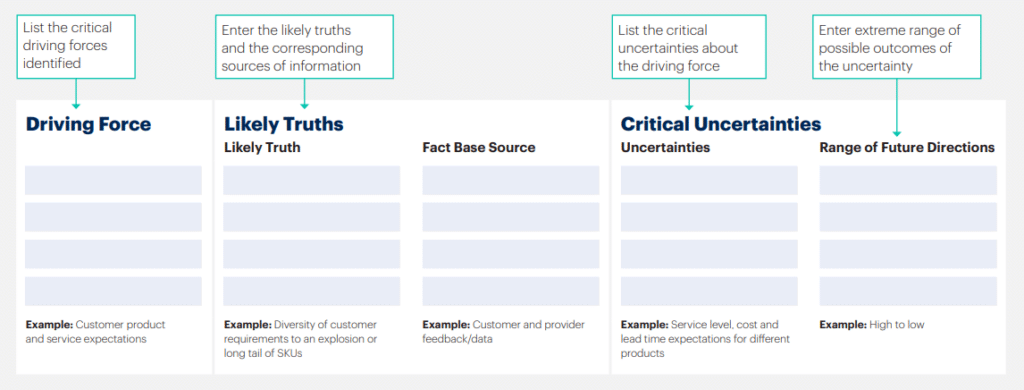
Implement Tighter Controls. You might also consider solutions that give you more control over supply chain operations. For example, if there’s a supply shortage, you’ll need to figure out how to best allocate limited resources across various channels, projects, and customers. You’ll also need to ensure that allocated stock will be there when you need it.
Invest in Robust Security Protections
Security, of course, is critical for any organization. But, for those that rely on global supply chains, security risks are exponentially higher.
In large part, that’s due to the sheer number of links in the average chain. But also, because many of those links are major enterprises themselves, each with their own massive, interconnected network of suppliers, trading partners, and customers.
Cyber criminals, of course, know all about the risks associated with interconnected, global supply chains. And, thus, see them as prime targets – an opportunity to get more bang from each malware deployment.
If there’s even just one weak link in your network (or your partners’ network, or your partners’
partners’ networks), it unlocks a wealth of opportunities for threat actors to insert malware and steal IP or customer SSI data, halt critical operations, or hold data for ransom.
What this means is, you’ll need a robust set of security and data protections across all digital systems, devices, and users. Here are a few steps you can take to protect yourself:
Implement the Right Set of Tools. Microsoft offers a wide range of integrated security tools that use AI and automation to prevent, detect, respond, and recover from cyber-attacks.
Microsoft’s security solutions can help you build a multi-layered Zero Trust strategy, using tools like Azure, Entra, Sentinel, and Defender to protect all SCM operations. You can read about the MS security stack here, or watch our recent webinar on that same topic.
Regularly Update Security Protocols. Following Zero Trust principles is one of the most effective ways to safeguard your supply chain. Microsoft has a ton of Zero Trust materials on its site, as do other vendors like AWS and IBM.
You can also find SCM-specific resources from cybersecurity associations and nonprofit orgs. For example:
Educate Employees. Finally, employee awareness goes a long way in preventing cyber incidents. Basic cyber hygiene practices should be baked into your culture – in the onboarding process, in ongoing training materials, and critically, in daily discussions about optimizing supply chains or improving the customer experience.
You’ll also want to make sure that everyone is aware of the latest phishing tactics, best practices around BYOD policies and remote work, as well as what they should do if there’s an incident.
Supply chain resilience has become a business-critical goal for manufacturers and distributors due to the increasing complexity of supply chains, the vulnerability to disruptions, evolving customer expectations, and regulatory requirements.
By focusing on resilience, businesses can enhance their ability to adapt, recover, and thrive in an unpredictable and competitive business environment.
Velosio’s SCM experts understand the complex challenges supply chain orgs are up against – and what it takes to help clients overcome them.
Whether that’s bringing advanced AI into Business Central, setting up smart factories in D365 Supply Chain Management, or infusing productivity apps with supply chain insights via Power BI.
Contact us today to learn how our SCM solutions and services can help you build a more resilient supply chain.